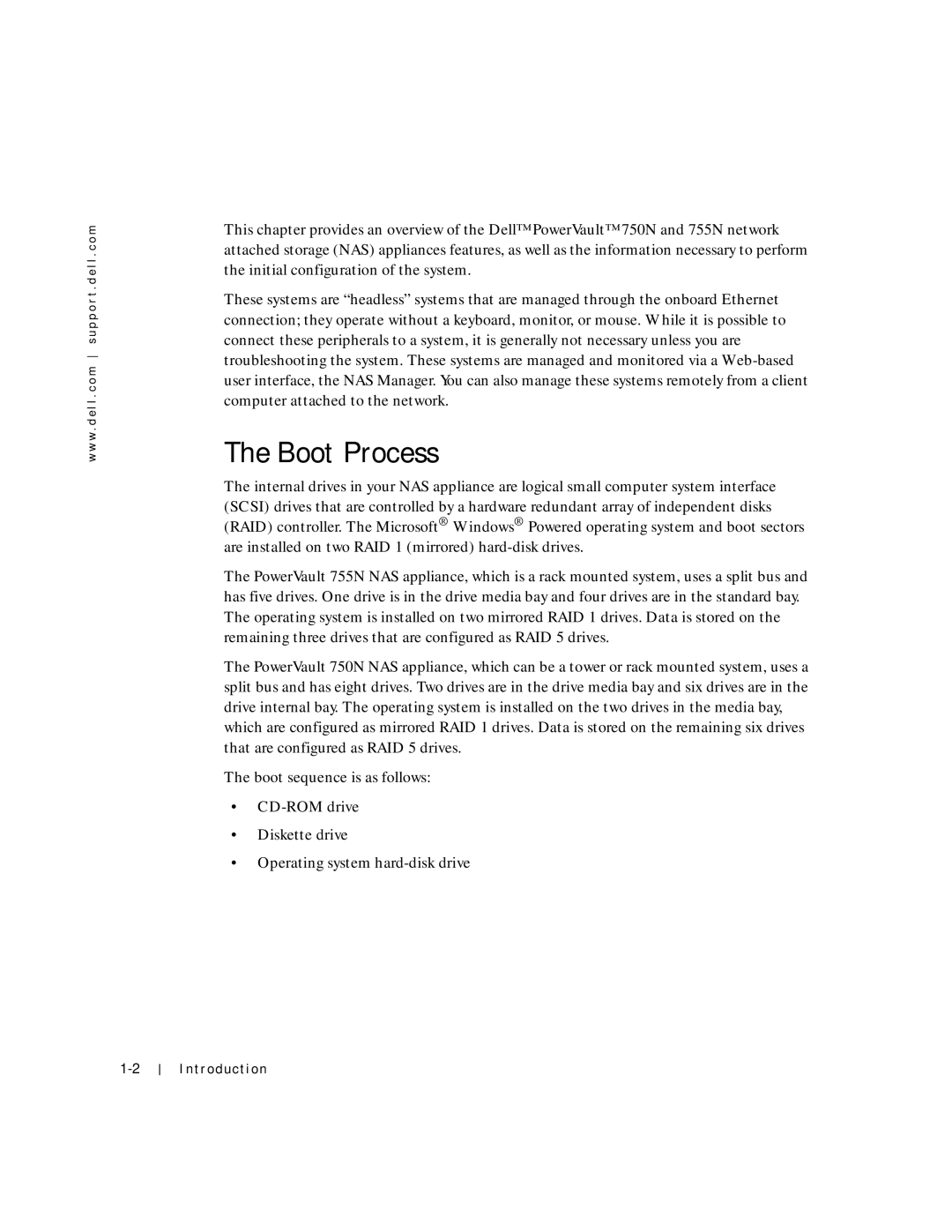w w w . d e l l . c o m s u p p o r t . d e l l . c o m
This chapter provides an overview of the Dell™ PowerVault™ 750N and 755N network attached storage (NAS) appliances features, as well as the information necessary to perform the initial configuration of the system.
These systems are “headless” systems that are managed through the onboard Ethernet connection; they operate without a keyboard, monitor, or mouse. While it is possible to connect these peripherals to a system, it is generally not necessary unless you are troubleshooting the system. These systems are managed and monitored via a
The Boot Process
The internal drives in your NAS appliance are logical small computer system interface (SCSI) drives that are controlled by a hardware redundant array of independent disks (RAID) controller. The Microsoft® Windows® Powered operating system and boot sectors are installed on two RAID 1 (mirrored)
The PowerVault 755N NAS appliance, which is a rack mounted system, uses a split bus and has five drives. One drive is in the drive media bay and four drives are in the standard bay. The operating system is installed on two mirrored RAID 1 drives. Data is stored on the remaining three drives that are configured as RAID 5 drives.
The PowerVault 750N NAS appliance, which can be a tower or rack mounted system, uses a split bus and has eight drives. Two drives are in the drive media bay and six drives are in the drive internal bay. The operating system is installed on the two drives in the media bay, which are configured as mirrored RAID 1 drives. Data is stored on the remaining six drives that are configured as RAID 5 drives.
The boot sequence is as follows:
•
•Diskette drive
•Operating system
Int roducti on
